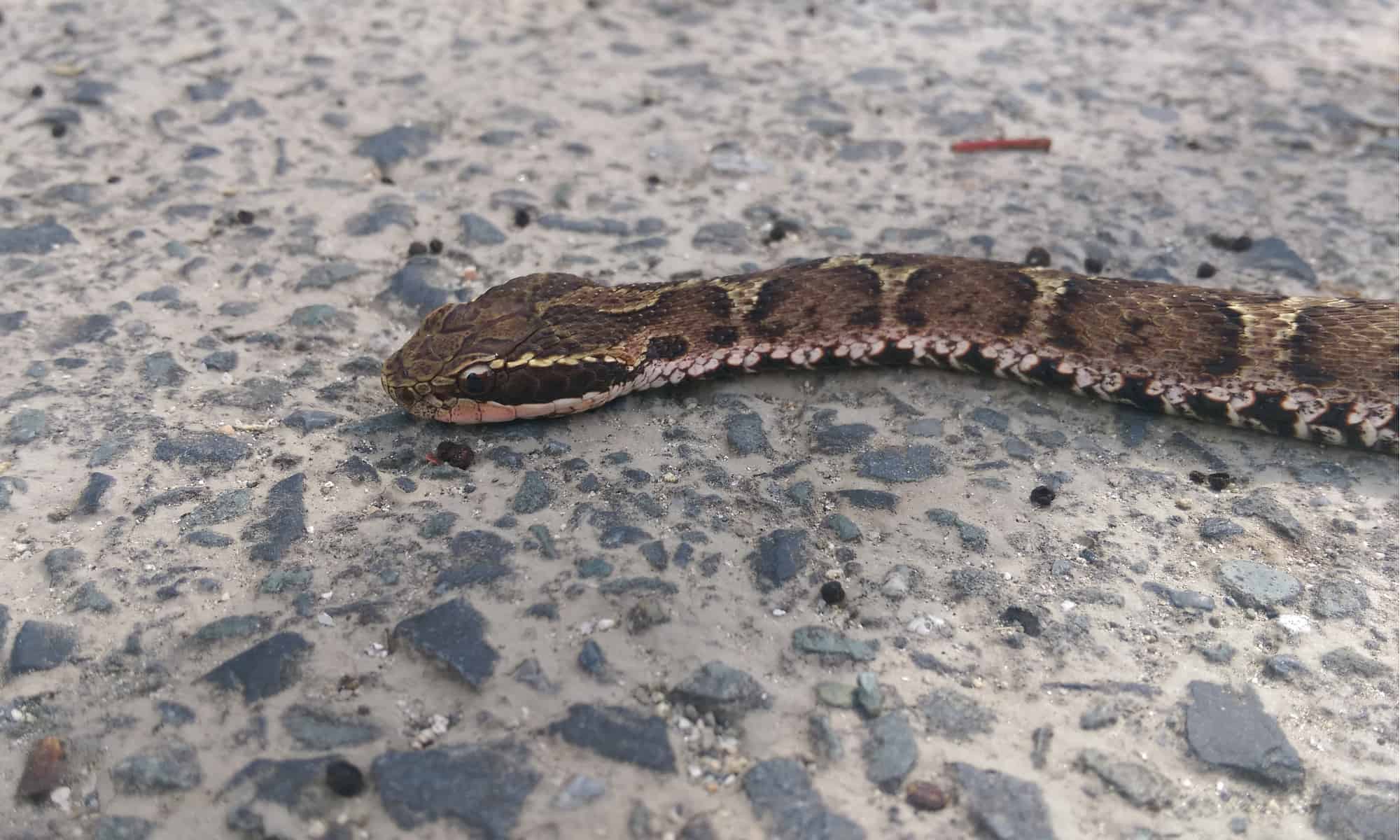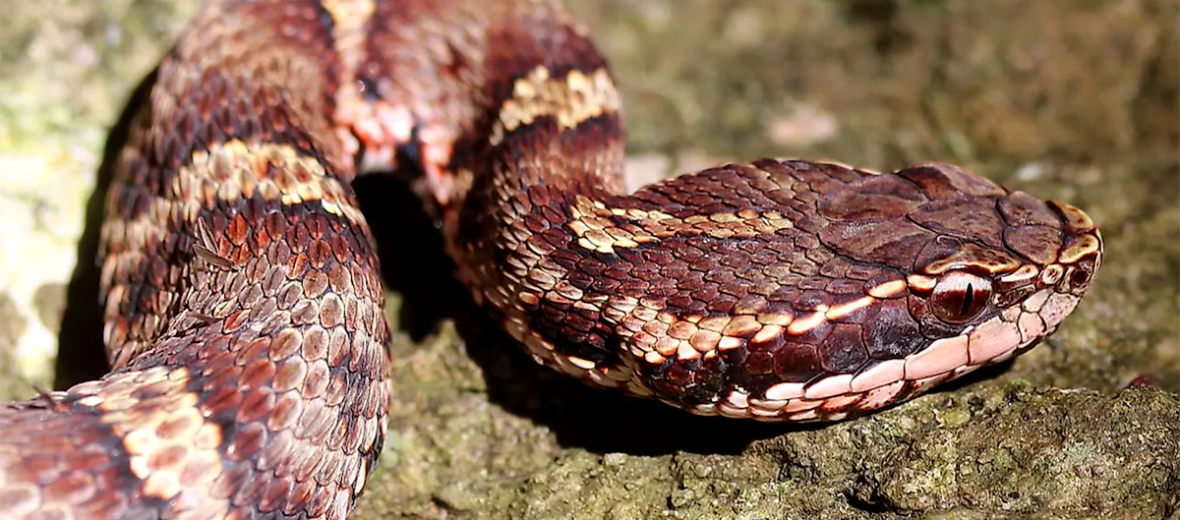Is a song title, a venomous snake, and a cultural symbol all capable of sharing a single identity? The answer is unequivocally yes, as the multifaceted concept of "Mamushi" demonstrates a compelling convergence of the natural world, artistic expression, and cultural nuance, particularly within the vibrant landscape of Japan and its global influence.
The term "Mamushi" acts as a fascinating nexus. It immediately conjures images of a specific creature: the Gloydius blomhoffii, more commonly known as the Mamushi snake or Japanese mamushi. This venomous pit viper, distinguished by its dark brown blotches against a pale gray backdrop, is a creature deeply ingrained in the Japanese ecosystem. Its presence extends across the Japanese archipelago and into neighboring regions of the Asian mainland, where similar species or closely related forms can be found.
However, "Mamushi" also resonates as the title of a song. In the modern music scene, "Mamushi" marks a significant collaboration between American rapper Megan Thee Stallion and Japanese artist Yuki Chiba, formerly known as Kohh. The track, released in 2024 on Megan Thee Stallion's third studio album, showcases the artists' prowess and the intersection of global music trends. This collaboration is a testament to both artists successful journey.
- Discover Skip The Games Your Guide To Harrisburg Encounters More
- Everything About Marcella Francesca Hetfield A Complete Guide
The lyrics of Mamushi weave together English and Japanese, reflecting the artists backgrounds and the international appeal of the song. Lines like okane kasegu, orere wa star (we get money, we are stars) directly convey the songs themes of success and wealth, while also incorporating different Japanese first-person pronouns depending on the context and speaker's gender.
| Category | Details |
|---|---|
| Song Title | Mamushi |
| Artist 1 | Megan Thee Stallion |
| Artist 2 | Yuki Chiba (formerly Kohh) |
| Album | Megan (2024) |
| Theme of the Song | Celebration of wealth, success, and cultural fusion |
| Languages in the Lyrics | English and Japanese |
| Key Lyrics Example | Okane kasegu, orere wa star (We get money, we are stars) |
| Release Date | 2024 |
| Collaboration Context | Megan Thee Stallion's appreciation for Japanese culture |
The origins of the word "Mamushi" offer yet another layer of meaning. The Mamushi snake holds a profound place in Japanese culture. This venomous pit viper, native to Japan and parts of East Asia, is also known as the Japanese moccasin, the Japanese pit viper, the qichun snake, or the salmusa mamushi. In Japan, the snake is known as Mamushi (), and its also referred to with the same name in English. Its presence is a recurring theme across various facets of Japanese life, from its incorporation in mythology, to its symbolism, and in everyday life. Furthermore, the unique characteristics of the snake, with its distinctive dark brown blotches against a pale gray base, are well-known in the regions where it lives.
The choice of Mamushi as a song title is therefore layered with meaning, reflecting Megan Thee Stallion's artistic evolution and her affinity for her snake imagery, which is a well-known motif for her, as seen in her previous tracks Cobra and Hiss. The songs themes of wealth and success resonate strongly with her public persona. Furthermore, the collaboration itself, born partly out of her visit to Japan in March 2024 to attend the Anime Awards, demonstrates her willingness to explore new creative horizons and broaden her musical scope, bringing together Japanese and American influences in a dynamic fusion.
- Niagara Falls Obituaries Recent Deaths Tributes
- National Couples Day 2024 Dates Wishes How To Celebrate
In the world of music, this convergence of cultures is not new, but the way Megan Thee Stallion and Yuki Chiba use Mamushi goes beyond a simple collaboration. It is an example of how artists today can draw inspiration from various cultural sources. The song is not just an exchange of musical styles; it's a blending of distinct experiences that brings together the Japanese and the American worlds. The song mirrors the way cultures interact and evolve in the contemporary world.
The Mamushi's role in the ecosystem is important. The snake, as a predator, plays a critical role in regulating populations of small mammals and other prey species. The snake inhabits lowland forests, marshes, and rocky hills, in a temperate climate. Researchers thought there were four subspecies at one time, they are now considered their own species. The Mamushi's influence goes beyond its ecological function; it's a symbol of resilience and adaptation in the face of change. The fact that this specific snake has adapted to various environments, from forests to rocky hills, is a testament to its adaptability.
The song is, in essence, a reflection of the artists' individual journeys to stardom, highlighting their accomplishments and resilience within the highly competitive music industry. The song is an anthem of empowerment, and the collaboration emphasizes their shared respect for each other's unique paths to musical accomplishment. The Mamushi snake, a venomous pit viper, shares its name with the song, which becomes a metaphor for the artist's success and tenacity.
The song's use of the Japanese language, its thematic focus on success and wealth, and its incorporation of the "Mamushi" title all come together to create a unique artistic statement. It presents a powerful fusion of musical styles and cultural influences that celebrates the essence of the artists, and their experiences on the global stage. The ensuing track Mamushi is a testament to Megan's appreciation for the Japanese pop culture and the collaboration offers a valuable insight into how the cross-cultural connections continue to reshape the music industry.
The collaboration between Megan Thee Stallion and Yuki Chiba, is more than just a musical partnership; it is a creative conversation spanning continents, cultures, and musical styles. The two have created something much more than a song; they have created a piece of art that reflects their unique identities.
For more detailed information on the Mamushi snake, you can consult resources such as:
Wikipedia


